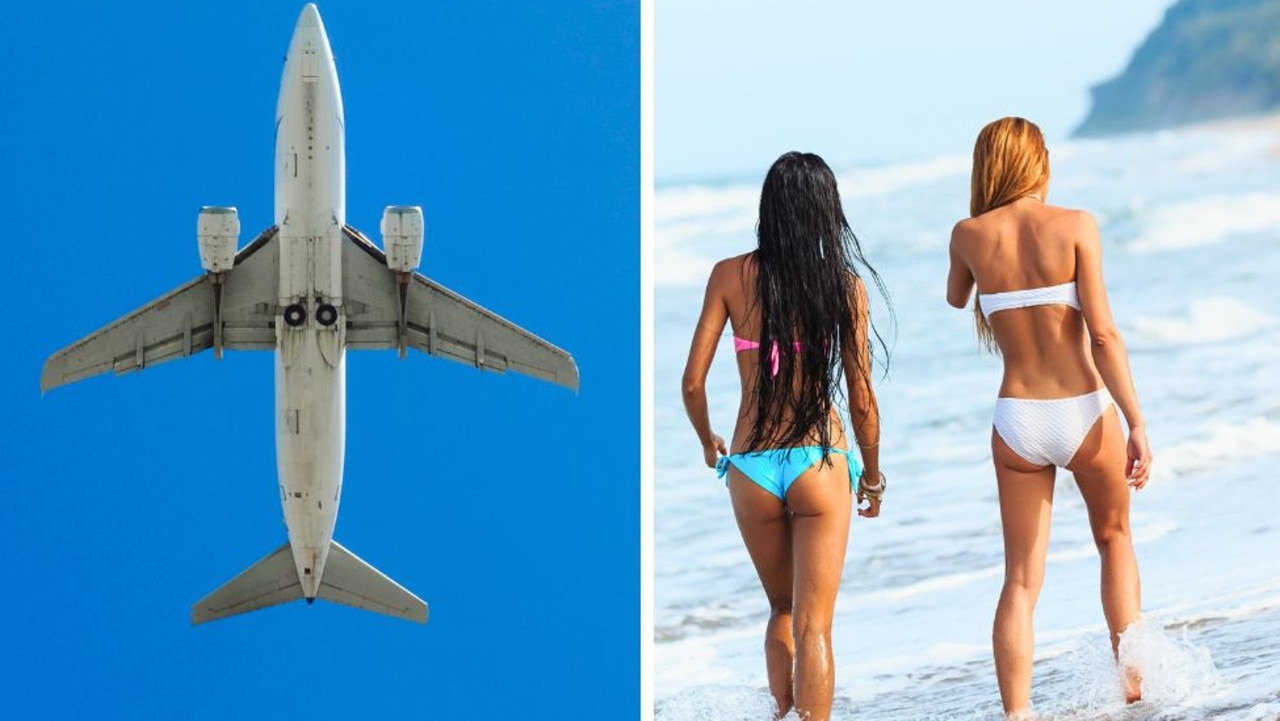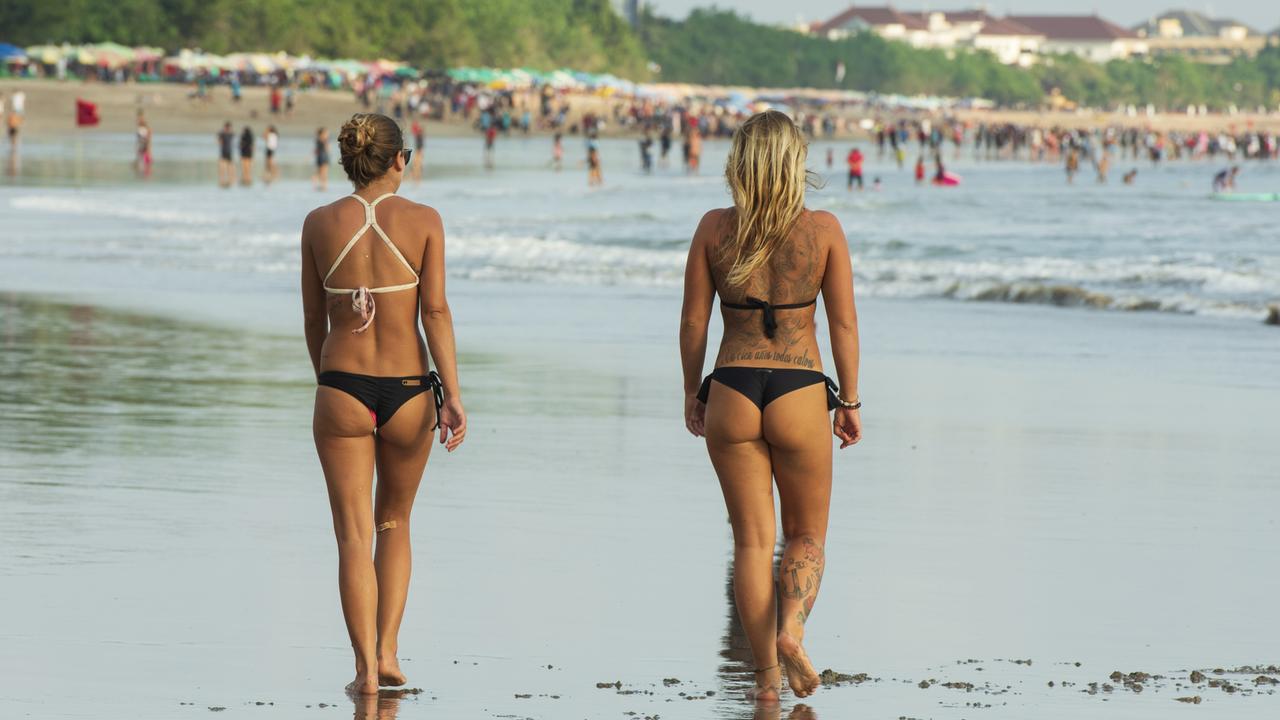Angel’s Billabong branded Bali’s deadliest swimming spot
It’s one the most stunning spots in Bali with tourists flocking to take snaps, but many have been warned of its grim reality.
It may be one of the most Instagrammable spots in Bali – but it comes with a grim warning.
One quick search on TikTok of Angel’s Billabong and your feed will be inundated with stunning videos showing the tranquil blue waters and picturesque landscape of the popular tourist spot.
However, the scenic infinity pool embedded in the cliff on the southwestern end of Nusa Penida Island has been described as a “death trap”.
It has claimed the lives of several tourists with others left severely injured after being hit by rogue waves.
One clip shows just how quickly the tide can turn as a couple is seen hanging on to the edge of a rock as waves crash into the pool.
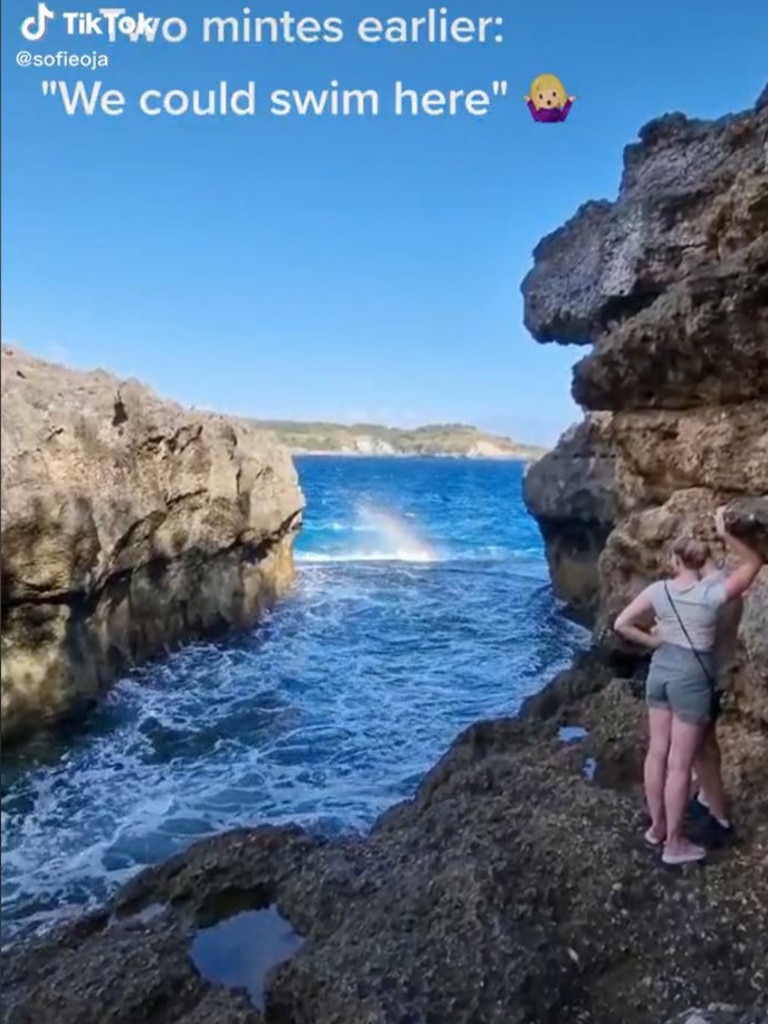
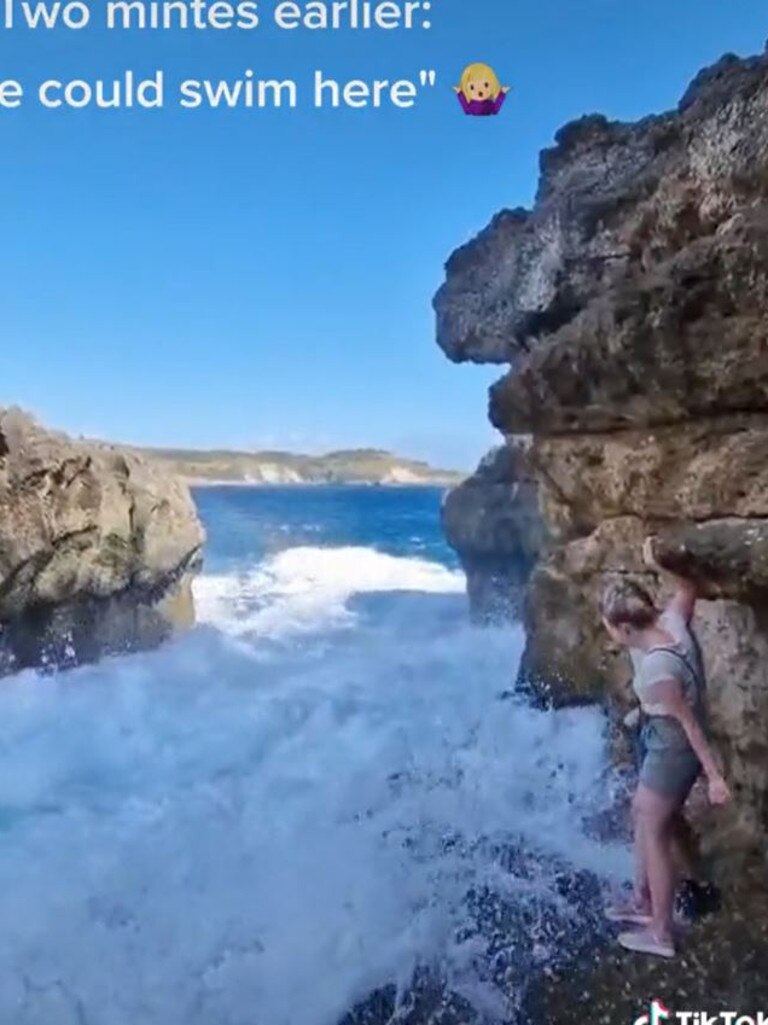
“Always listen to the guide,” the caption reads.
Another video shows four young girls relaxing in the natural pool before a forceful wave crashes into them leaving the group frazzled as they try to swim to safety.
Two girls are seen attempting to climb up to a rock ledge while the remaining girls anxiously try to escape before another wave crashes into them.
“The girls are lucky; everyone is alive,” the caption shared by Baligasm says.
“Be careful when you’re travelling in here guys.”
The clip has been shared several times to social media leaving viewers stunned.
“OMG,” one person simply wrote.
“I would have fainted once I scurried onto the rocks,” said another.
Others have warned to just take pictures and not swim in the pool.
“Take pictures from above, DON’T go down! Even when it’s low tide there can be huge waves. Several people have died here!” one person wrote on Tripadvisor.
The hotspot, which attracts thousands of a tourists every year, is susceptible to freak waves that wash people out to sea.
In 2018, 46-year-old Chinese national Qiuwei Anhui was killed while taking a selfie at Angel’s Billabong after a wave crashed into him and pulled him out to sea.
In 2017, a 23-year-old New Zealand tourist identified by the initials TJS went missing from Angel’s Billabong after trying to save his German girlfriend, who had also been pulled into the sea but rescued by a snorkeller.
In 2016, Brad Williams, from Perth, and his Balinese wife Lestari and Lestari’s eight-year-old sister were hit by a rogue wave while walking along the rocks near Angel’s Billabong and swept out to sea. Only Mr Williams made it back to shore.
The pair were on their honeymoon when the freak accident took place.
Ms Williams’ brother told the media at the time six people had gone to the natural pool and were just about to leave when the wave hit after they had been warned conditions were too dangerous, Perth Now reported.

A couple who recently visited the hotspot shared their experience on their blog, No Postcode.
“We visited during a busy time, so there were a bunch of people sitting on the cliffs overlooking the rock pool,” Carson from the US and Zowie from Australia wrote.
“There are steps leading from the cliffs down to the water, where people were swimming. “Despite there already being people down there, we were hesitant to swim as local guides were saying it’s incredibly dangerous.
“Angel’s Billabong showed its true colours when an enormous wave crashed over the infinity edge and sent the swimmers and photo-takers tumbling. Luckily no one was injured, but it was a stark reminder that Mother Nature is boss.”
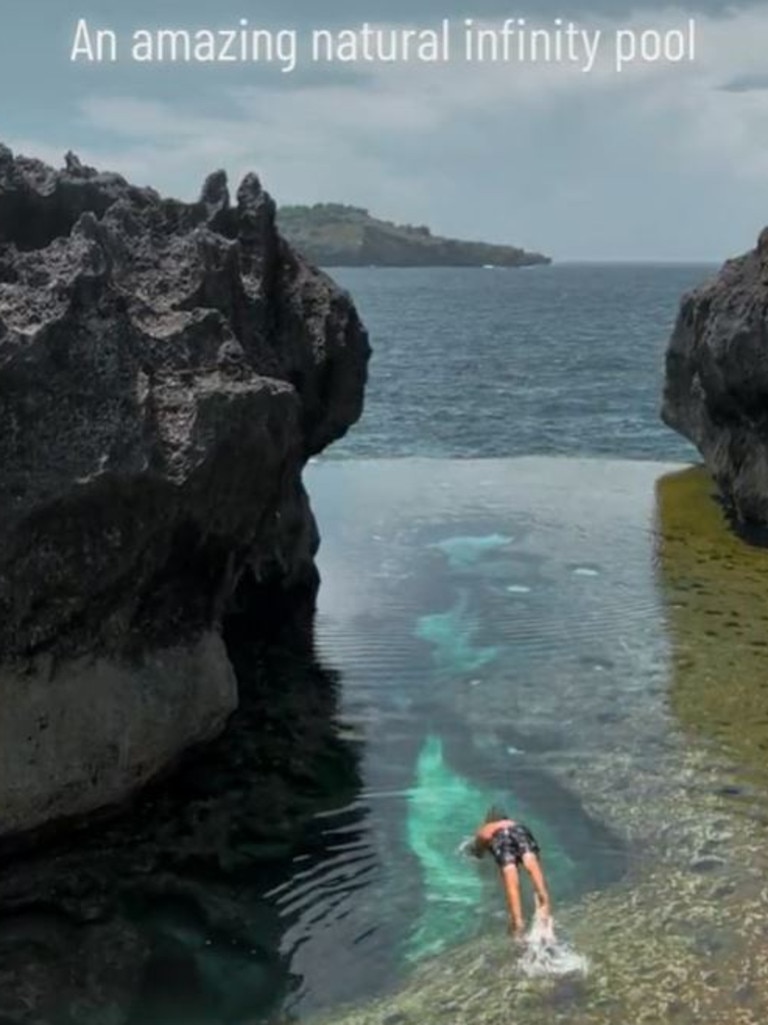

The couple warned of the importance of listening to your guide.
“[They] are very good at reading the waves, and if you go with a guide they can tell you when to quickly get out of the water, but even then it’s a risk.
“We weren’t willing to risk our lives for the ’gram so we comfortably enjoyed the view from the cliffs above.”
In the past month, five foreign tourists lost their lives on Nusa Penida Island with the most recent fatality, 26-year-old Indian tourist Vamshi Krisha Ramuni.
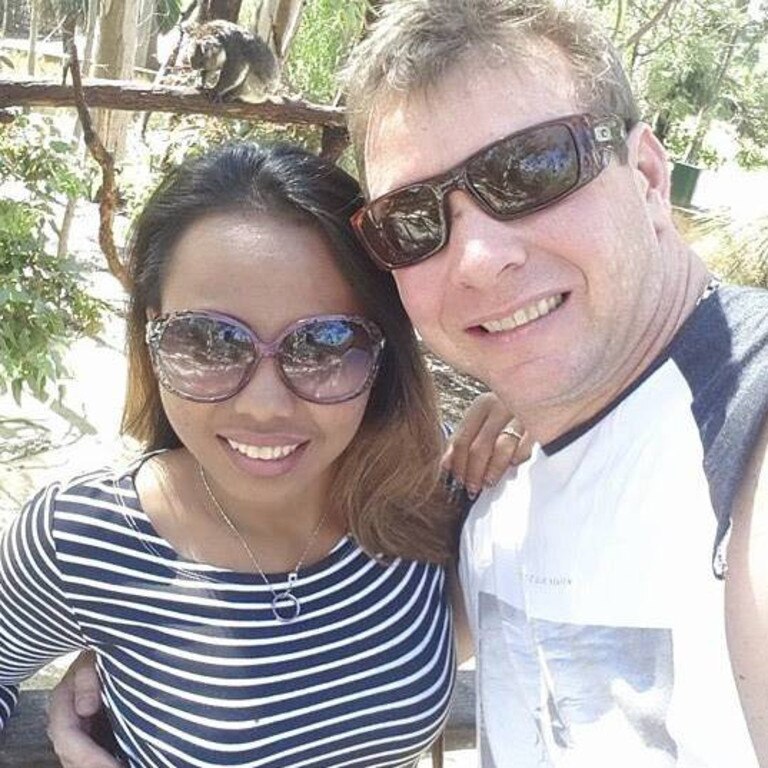
He was pulled out of the water in an unresponsive state after snorkelling at Manta Bay, a popular dive site, on January 22. His cause of death has not been determined.
On the same day, 27-year-old French tourist Lancelot Aurelien Sper was swept out to sea after he ignored a no swimming sign at Kelingking Beach. He was saved by a search and rescue team but broke his hip.
The day before, a 32-year-old Russian tourist identified by the initial M dislocated her shoulder when she was smashed by a rogue wave while walking on Kelingking Beach.
And on January 20, British national Nicholas Yates, 53, was found dead in his hotel room in Nusa Penida after complaining of headaches and vomiting the night before. Police are investigating the matter.

For centuries, the Balinese steered clear of Nusa Penida, as the island is believed to be the home of Mecaling, Bali’s demon king, his invisible army of demons and islanders who practised black magic to appease them.
European mariners were also apprehensive, evidenced by the skull and crossbones symbols that mark Nusa Penida on old maps.
Nusa Penida’s image changed completely in 2012 when National Geographic published an article describing it “a biological and cultural treasure, basically immune from all the trappings of Western culture”.
This coincided with the meteoric rise of Instagram.
The island’s Kelingking Beach, which features cliffs that resemble a Tyrannosaurus Rex, is the most instagrammed beach in the world per square metre of sand, according to an analysis of 26 million Instagram hashtags by Money.co.uk.
Bondi Beach came in second.




